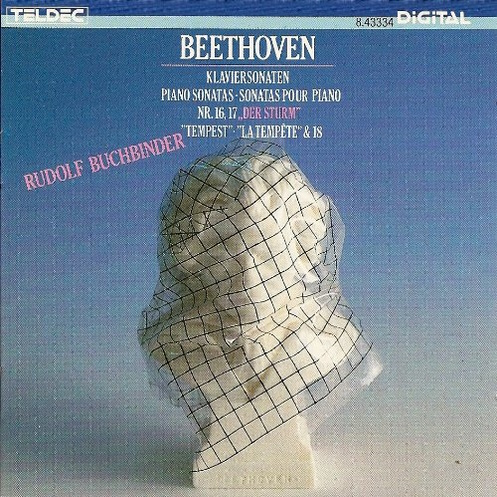 |
|
1 CD -
8.43334 ZK- (c) 1986
|
|
DIE
KLAVIERSONATEN
|
|
|
|
|
|
|
|
| Ludwig van
BEETHOVEN (1750-1827) |
Klaviersonate
Nr. 16 G-dur, Op. 31 Nr. 1
(Komponiert um 1801/02)
|
|
21' 21" |
|
|
-
Allegro vivace
|
6' 13" |
|
1 |
|
-
Adagio grazioso
|
8' 44" |
|
2 |
|
-
Rondo: Allegretto
|
6' 24" |
|
3 |
|
Klaviersonate
Nr. 17 d-moll, Op. 31 Nr. 2
"Der Sturm" (Komponiert um 1801/02) |
|
21' 25" |
|
|
-
Largo · Allegro
|
8' 27" |
|
4 |
|
-
Adagio
|
7' 10" |
|
5 |
|
-
Allegretto
|
5' 48" |
|
6 |
|
Klaviersonate
Nr. 18 Es-dur,
Op. 31 Nr. 3
(Komponiert 1801/02)
|
|
21' 54" |
|
|
-
Allegro
|
7' 34" |
|
7 |
|
-
Scherzo: Allegretto vivace
|
4' 27" |
|
8 |
|
-
Menuetto: Moderato e grazioso
|
5' 06" |
|
9 |
|
-
Presto con fuoco
|
4' 37" |
|
10 |
|
|
|
|
Rudolf BUCHBINDER,
Klavier (STEINWAY-Flügel)
|
|
|
|
|
|
Luogo
e data di registrazione |
|
-
|
|
|
Original
Editions |
|
Telefunken |
6.35596 FK - Vol.3 | 3 LPs | LC
0366 | durata: 53' 24" · 41' 14"
· 49' 53" | (p) 1982 | ANA |
stereo | (Nr. 16)
Telefunken
| 6.35472 FK - Vol.1 | 3 LPs | LC
0366 | durata: 46' 29" · 43' 17" ·
46' 12" | (p) 1981 | ANA | stereo
| (Nr. 17, 18)
|
|
|
Edizione CD
|
|
Teldec |
8.43334 ZK | 1 CD | LC
3706 | durata: 65' 00" |
(c) 1986
| DDD/DMM | stereo
|
|
|
Executive
Producer |
|
-
|
|
|
Recording
Engineer |
|
-
|
|
|
Cover design
|
|
Holger
Matthies
|
|
|
Note |
|
- |
|
|
|
|
| THE 32
PIANO SONATAS (10 CDs DMM) |
Piano
Sonatas Nr. 17 d-moll, Op. 31
Nr. 2 "Der Sturm
Beethoven wrote the three sonatas
of op. 31 in 1801/02, during a
period of upheaval marked by his
personal crisis, the first signs of
his deafness (”Heiligenstadt
Testament," 1802); but it was also
a period of artistic upheaval. “I
am not very pleased with the works
that I have written to date. As
from today, I shall embark on a
new course” is what, according to
Czerny, Beethoven said to the
violinist Wenzel Krumpholz
(presumably in 1802). This new
course manifested itself most
clearly in the ”Eroica,” written
in 1803, and representing an
entirely new symphonic style; but
it is also evident in his piano
works, such as the Variations op.
35 (1802) and not least in the
Sonatas of op. 31, particularly in
Nos. 2 and 3, which in many
respects appear to continue the
experiments in form contained in
the two sonatas ”Quasi una
Fantasia” of op. 27. Czerny:
"Shortly after this event” (the
remark quoted above) "three
sonatas appeared, in which can be
observed the partial realisation
of his resolve.” Exceptionally,
the Sonata in D minor has only
three movements. The middle
movement is a broadly conceived
Adagio with vast sonorities,
fanning out in an almost
orchestral fashion, in which
various registers answer one
another and a sublime, slow melody
is embellished by remarkably
detailed figurations. The last
movement is an Allegretto, clearly
developed from the broken chord;
its form is a mixture of rondo and
sonata. According to an anecdote
related by Czerny, Beethoven got
his inspiration for the kinetic
energy which infuses the movement
from watching a horseman who rode
past his window one day. But when
Schindler questioned the composer
about the significance of this
sonata and of the ”Appassionata,"
he is said to have replied, quite
casually: “Read Shakespeare’s
’Tempest’!"
Piano
Sonatas Nr. 18 Es-dur, Op.
31 Nr. 3
The Sonata in E flat has four
movements ; the second, however,
is a Scherzo in duple time, of a
humorous character which in the
case of Beethoven means grotesque,
full of surprises and constant
dynamic and rhythmic changes. The
third movement is a brief Minuet,
which appears from its grazioso
strain to be intended as a
substitute for the missing slow
movement. But even more than in
these deviations in form from the
accepted rule, the “new course”
can be discerned in what may be
described as the developmental
character of the form: the manner
in which the thematic material not
only continues to change, but is
presented not as a structure which
is complete in itself but as one
still in the process of evolution.
Thus the first subject of the
opening movement of op. 31, No. 2
is only recognised as such when at
long last the key and the basic
tempo are established in bar 21:
after a rudimentary introduction
one does not, as one might expect,
encounter the subject but rather
its continuation and elaboration.
The “subject” - it barely accords
with the accepted definition of the
term - has been more or less
concealed in the seemingly
improvisatory interplay of the
largo broken chords and
violinistic scales of the opening.
In the recapitulation the
“subject” is even more completely
obscured by recitativic
interpolations, rather as though
it were a development section;
there is no corresponding D minor
passage (as in bar 21), but in its
place there appears a passage in
the contrasting key of F sharp
minor, the opening key of the
development, which gives an
impression of being entirely new.
No less improvisatory is the
beginning of the Sonata in E flat,
opening with a bird call in the
subdominant and thus strictly
dissonant, as though it were an
answering phrase replying to a
question that has not actually
been posed. The same device is
again employed in the last
movement of the same sonata: the
first figure is not like a
beginning, but is a turn of phrase
which is a typical ending.
Piano
Sonatas Nr. 16 G-dur, Op. 31
Nr. 1
The G-major
sonata op. 31/1 - probably the
second sonata composed by
Beethoven - is remarkable in its
first movement above all for the
rhythmic trick of “anticipation”,
whereby the right hand literally
comes in a semiquaver earlier than
the left, thus artificially
producing an upward beat. This
device is expounded so
protractedly in the opening bars
that the “normal” chords in bars
10/11, played simultaneously by
both hands, somehow seem wrong!
Beethoven plays nothing short of
excessively with this rhythmic
idea in the development and in the
expansive coda. (Sketches show
that this device was obviously the
central idea for the movement,
which Czerny accurately described
as ”energetic, humorous and
wittily lively”.) The finale also
has a similarly long coda, with
witty distortions of the subject
and sharply contrasting adagio
insertions. (Czerny: “very
humorous, somewhat Baroque in
character”.) In the first movement,
the first subject contrasts with
the second rhythmically as well as
harmonically: rhythmically, in
that it proceeds as smoothly as
possible, with steady quaver
basses, almost in the manner of a
simple contredanse melody,
harinonically, one is surprised by
a third-related B-major, which
returns in the epilogue in an
utterly Schuhertian interplay with
B-minor. While the first movement
consists to a large extent of
”exploitation” of a rhythmic
device, the second, with the
unusual tempo marking adagio
grazioso, gives the impression of
being a variation on types of
attack and phrasing (legato, non
legato, portamento and above all
staccato), which affects all the
main parts of the movement, and,
together with the trills and
nimble figurations, lends it
rather the character of a
gracefully performed serenade. The
last bars of the movement,
however, deviate unexpectedly from
the serenade mood, with their
intimate sound.
|
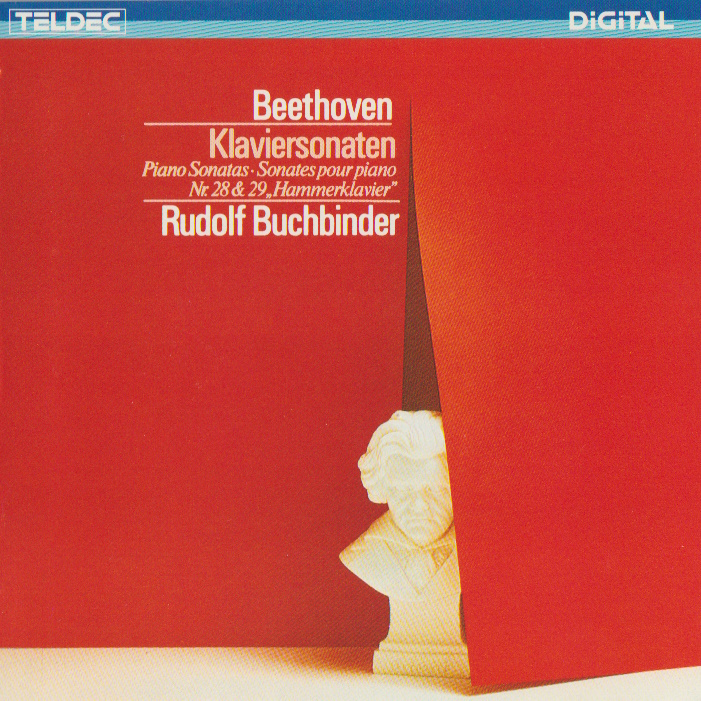
1 CD - 8.42761 ZK - (c) 1984
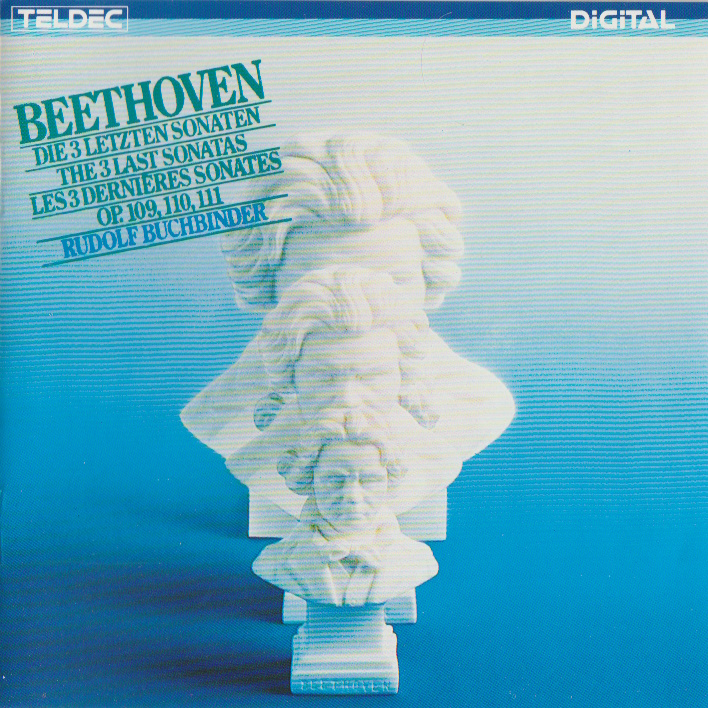 1 CD -
8.43027 ZK - (c) 1984
1 CD -
8.43027 ZK - (c) 1984

1 CD -
8.43206 ZK -
(p) 1985
1 CD - 8.43415
ZK - (p) 1986
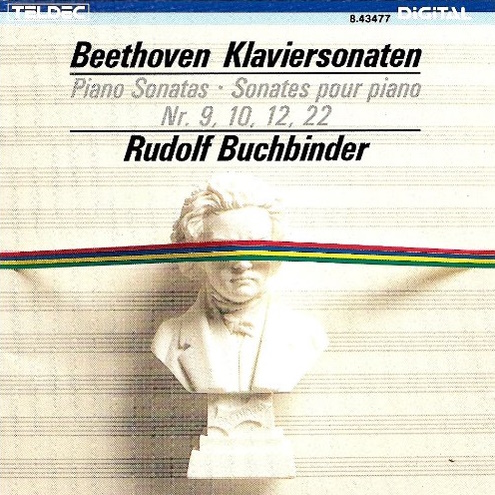
1 CD - 8.43477
ZK - (p) 1987
|
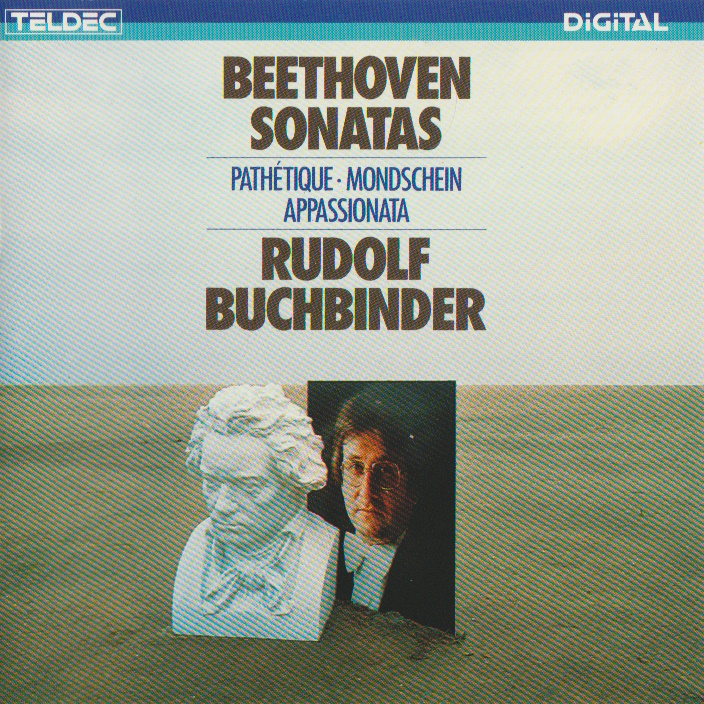
1 CD - 8.42913 ZK - (c) 1983
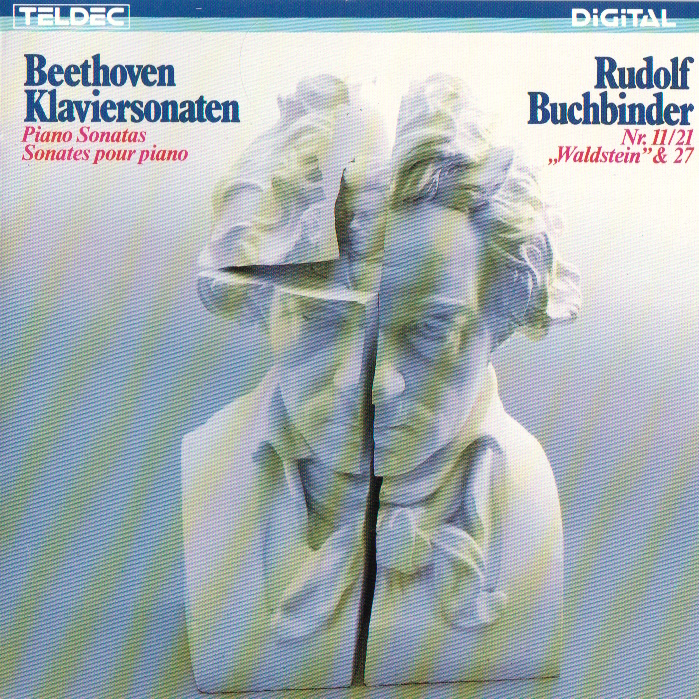
1 CD - 8.43111 ZK - (p)
1985
1 CD - 8.43334 ZK
- (p) 1986

1 CD - 8.43476
ZK - (p) 1987
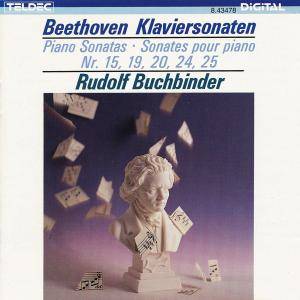
1 CD - 8.43478
ZK - (p) 1987
|
|
|
|
|